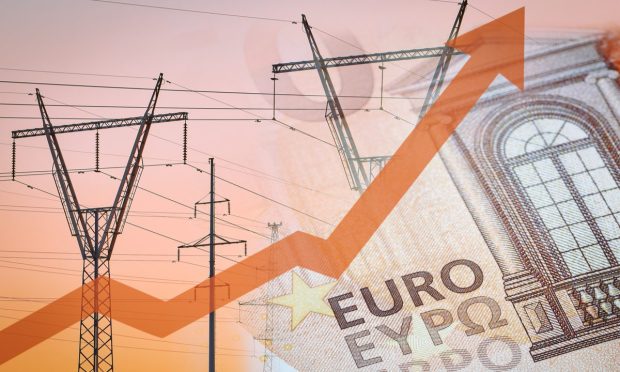Eurozone’s 9.2% Headline Inflation Rate Masks Deep Lingering Pain

Eurozone inflation has dropped back into the single figures after two months of double-digit rates.
The latest figures from the EU statistics agency Eurostat estimate that the annual inflation rate across the eurozone was 9.2% in December, down from 10.1% in November and 10.6% in October.
The lower inflation follows a series of interest rate hikes initiated by the European Central Bank (ECB) in 2022 and falling energy prices throughout the winter.
Despite lower prices for wholesale gas than were experienced over the summer, energy is still expected to have the highest annual inflation rate in December at 25.7%. And even though this represents a sharp decline compared to November’s 34.9% rate, energy inflation is still well ahead of the general index, which measures price inflation among a basket of goods and services.
While still high, the drop off in energy inflation was enough to counterbalance increased inflation across all other categories Eurostat assesses.
After energy, the next most inflationary category assessed by Eurostat is food, alcohol and tobacco. The agency estimates that inflation in this category was 13.8% in December, up two percentage points from the previous month.
Uneven Regional Inflation Pattern
The recent numbers reveal that eurozone countries are experiencing price increases at markedly different rates. And while some countries are on the road to recovery, others are still in the grips of rising inflation.
The good news is that at least the European countries with the highest inflation, like the Baltic states, appear to be turning the corner.
For example, Estonia, one of the eurozone countries that has felt the worst inflationary pressure during the past year, had an estimated inflation rate of 17.5% in December, a drop from the 25.2% peak it recorded in August.
Beside Estonia, Latvia’s inflation stood at 20.7% in December, just a slight decrease from a high of 22% in September.
Other countries that are navigating their way out of high inflation include Luxembourg, where the annual rate is back down to 6.2% after coming close to double figures in July. And inflation in Spain, the eurozone country with the lowest inflation levels in December, is down to 5.6% following two months of double-digit price rises in July and August.
On the other hand, countries like Finland and Slovakia appear not to have passed peak inflation and continued to exhibit rising rates in December.
While still a long way from the ECB’s target of 2%, the fall back down to single-digit inflation will be welcomed by eurozone consumers, many of whom have experienced price increases that have far outpaced wage growth during the past year.
And while the ECBs interest rate policy is being driven by the need to bring inflation down to a manageable level, the flipside of higher interest rates is that banks are less able and willing to lend to consumers and charge higher rates when they do.
As PYMNTS reported in December, after climbing to record highs in the late summer, annual loan growth to businesses and consumers dipped in November as banks look to curtail their exposure to credit defaults.
In a further sign that major lenders are looking to de-risk their credit portfolios, the French bank BNP Paribas is reportedly considering a major restructuring of its consumer finance unit.
For all PYMNTS EMEA coverage, subscribe to the daily EMEA Newsletter.
